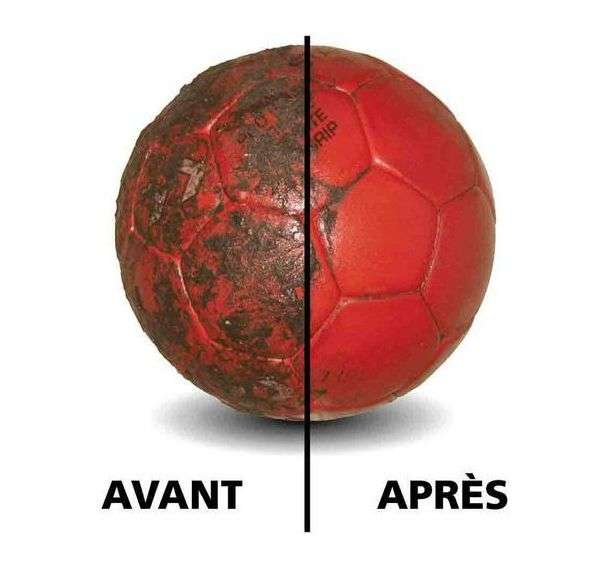To remove scale from your hot water tank, follow these simple steps:
1. Open the device by removing the safety cover.
2. Unplug the cable to ensure your safety.
3. Pour the solution into the tray provided for this purpose.
4. Adjust the action of the device to remove scale from the elements, especially the anode and the resistance.
By following these steps, you can easily remove scale from your hot water tank and improve its efficiency.
How to maintain your hot water tank?
Maintaining gas spas includes several essential steps to ensure their proper functioning and extend their lifespan. Here are the mandatory steps to follow:
– Start by performing a blow-clean injection to clean the inside of the spa. This helps eliminate impurities and bacteria that may accumulate.
– Also check the pilot lights and filters. Clean or replace them as necessary to ensure optimal combustion.
– Consider replacing the valve and blocking the water inlet. This prevents leaks and prevents any problems with the water supply.
– Take the time to brush and clean the fins of the heating body. These fins can accumulate limescale or other residue which can reduce heating efficiency.
– Do not neglect cleaning the burner nozzle with water. This step helps remove any dirt or debris that could clog the burner and impair the operation of the spa.
– Finally, remember to purge the spa regularly to eliminate excess body heat accumulated in the water.
By following these steps, you can ensure that your gas spa will always be in perfect working order and ready to provide you with enjoyable moments of relaxation.
How do you know if the hot water tank is scaled?
You’re probably wondering how to tell if a balloon is scaled, right? Well, there are a few signs you can look for to determine this. But before that, let me remind you of two common problems related to tanks: the electricity bill that keeps increasing and the hot water that becomes less and less hot.
Regarding the electricity bill, it is important to note that even if you do not change anything in your behavior, it still continues to increase. This may be an indicator that your balloon is scaled. So remember to check this possibility if you notice an unusual increase in your bill.
When it comes to hot water, if you notice that it is less hot than before, this could also be a sign that your tank is out of scale. The accumulation of limescale in the tank can reduce its efficiency and therefore the water temperature.
Now that you know about these potential issues, here are some additional signs that may indicate your balloon is out of scale:
– Longer heating time: if your tank takes longer than before to heat the water, this may be due to a build-up of limescale.
– Reduced water pressure: If you notice a decrease in water pressure in faucets or shower heads, it may be caused by a scaled tank.
– Strange noises: If you hear unusual noises coming from your tank, this may indicate limescale buildup.
If you notice these signs, it is recommended to call a professional to check and possibly descale your balloon. This will help prevent further problems and keep your hot water system running smoothly.
In summary, if your electricity bill increases for no apparent reason and the hot water becomes less hot, your tank may be out of scale. Pay attention to signs such as longer heat-up time, reduced water pressure and strange noises. Do not hesitate to call a professional to resolve this problem and maintain the performance of your system.
What maintenance for a cumulus?
To guarantee optimal performance and extend the life of your spa, electric or cumulative water heater, descaling is an essential step. It is recommended to carry out this operation every 4 to 5 years (or at most every 1 to 2 years for regions with very hard water).
How to remove resin from a handball jersey?
If you notice a late stain on your leather jacket or synthetic clothing, you can use 70° alcohol or a suitable solvent (for more delicate materials) with a paper towel or a clean cloth.
How do I remove resin from the hood of my car?
To remove resin from your car, here is a simple and effective method. Here’s how to do it:
1. Prepare a microfiber cloth damp with soapy water.
2. It is best to use warm water for best results.
3. Gently rub the resin with the cloth using good pressure.
4. After a few minutes you will see that the resin begins to come off.
5. Caution, be careful not to apply too much pressure to avoid damaging your car paint.
By following these steps, you can easily get rid of the resin without damaging your vehicle.
How to remove pine resin from clothing?
Here’s a simple tip for removing resin stains from synthetic clothing:
1. First, place paper towels over the stained area to absorb as much resin as possible.
2. Next, take a hot iron and gently run it over the top of the stain and the paper towel.
3. The heat from the iron should help soften the resin, allowing the clothes to peel off the paper easily.
4. After ironing, quickly remove the absorbent paper carefully to avoid spreading the resin elsewhere on the clothes.
5. If traces of resin remain, repeat the previous steps until the stain disappears completely.
Remember to be careful when using a hot iron and make sure you don’t burn synthetic clothing.
How to remove pine resin from wool?
To remove resin stains from clothes, here is a simple tip:
1. Start by applying a sheet of paper towel to the stained area.
2. Next, run a hot iron over the absorbent paper. This will absorb most resin contaminants.
3. After the paper has absorbed some of the dirt, use a cloth dipped in methylated spirits to wipe off the remaining stains.
By following these steps, you should be able to effectively remove resin stains from your clothes. Remember to be careful when using methyl alcohol and work in a well-ventilated area.
How to remove resin from your hands?
Ecological cleaning of epoxy resin can be carried out in a simple and environmentally friendly way. Here are the steps to follow:
– Pour a few drops of vegetable oil onto the area to be cleaned. Make sure to coat the skin well with this oil.
-Then add a pinch of baking soda and gently rub the area.
– Once rubbing is complete, rinse thoroughly with soapy water.
– Finally, finish by rinsing with clean water to remove all residue.
Thanks to this method, you will be able to effectively clean the epoxy resin while preserving the environment.
How to remove fir resin from your hands?
If you find yourself with sticky sap stains on your arms, here’s a simple trick to remove them:
1. Apply butter or oil to the affected area.
2. Leave for a few moments so that the fat can dissolve the sap.
3. Then rinse thoroughly with warm, soapy water.
4. Use your hands or a sponge to gently scrub and remove any remaining sap.
5. Repeat these steps as necessary until the stain is completely gone.
This method is effective in removing sap stains without harming your skin. Remember to do a test on a small area beforehand to avoid any allergic reactions. With this tip, you can easily say goodbye to stubborn sap stains on your arms!
How to remove resin from the skin?
Here’s how to remove resin stains from the skin:
– Apply an oily substance such as oil, butter or mineral spirits to the affected skin.
– Add soap to facilitate the cleaning process.
– Rinse thoroughly to remove resin and residue.
– If necessary, repeat these steps until the stain disappears completely.
– Remember to moisturize your skin after cleansing to avoid irritation.
How to remove zucchini from your hands?
On the Internet you will find many tips for removing the dry, sticky layer of sap on your fingers. Here are some suggestions that might be helpful to you:
– Dip your hands in warm water with a little soap. This can help soften the sap and make it easier to remove.
– Try pre-soaking your hands in oil before washing your hands. This can help dissolve the sap and make it easier to clean.
However, remember that these techniques may vary from person to person. So it’s best to try different methods to find the one that works best for you. Do not hesitate to seek professional advice if you have any doubts or concerns.
In summary, the Internet is full of tips for removing sap from your fingers. Try soaking your hands in warm water with soap or pre-soaking them in oil before washing.
How to remove handball glue?
Here are some tips for easily cleaning glue from soccer balls or club clothing. Among the different cleaning techniques, we recommend this one:
1. Use a hair dryer: apply hot air directly to the glue stain for a few minutes. The heat will help dissolve the glue, then you can gently remove it with your fingers or a clean cloth.
2. Use an iron: place a clean cloth on the glue stain and run the hot iron over it for a few seconds. The heat will soften the glue, which you can then wipe off with another clean cloth.
3. Use a gel cleanser: This method may be more boring, but it is very effective. Generously apply a specific cleaning gel to the resin ball and scrub gently with a soft brush. Leave it on for a few minutes, then rinse thoroughly with clean water.
4. Use white vinegar: Soak a clean cloth with white vinegar and gently dab the glue stain. Leave it on for a few minutes, then rub gently until the glue comes off.
Remember to always test these methods on a small, inconspicuous area before applying them to the entire material. And above all, take your time and be patient!
How to wash a foam ball?
When your foam mattress is not very clean, Crystal Soda can be a reliable alternative for cleaning it. Here’s how to do it:
– Wear gloves to protect your hands.
– Soak a sponge in a solution of soda crystals and hot water.
– Pass the sponge over the entire surface of the mattress using circular movements.
– Once you have thoroughly cleaned the mattress, rinse it using a sponge soaked in clean water.
– Be sure to rinse thoroughly to remove all soda crystal residue.
– Then allow the mattress to dry completely before using it again.
Using this method, you can end up with a clean, fresh foam mattress without resorting to harsh chemicals. Remember to always follow safety instructions and test the solution on a small, inconspicuous area of the mattress before applying it to the entire surface.


